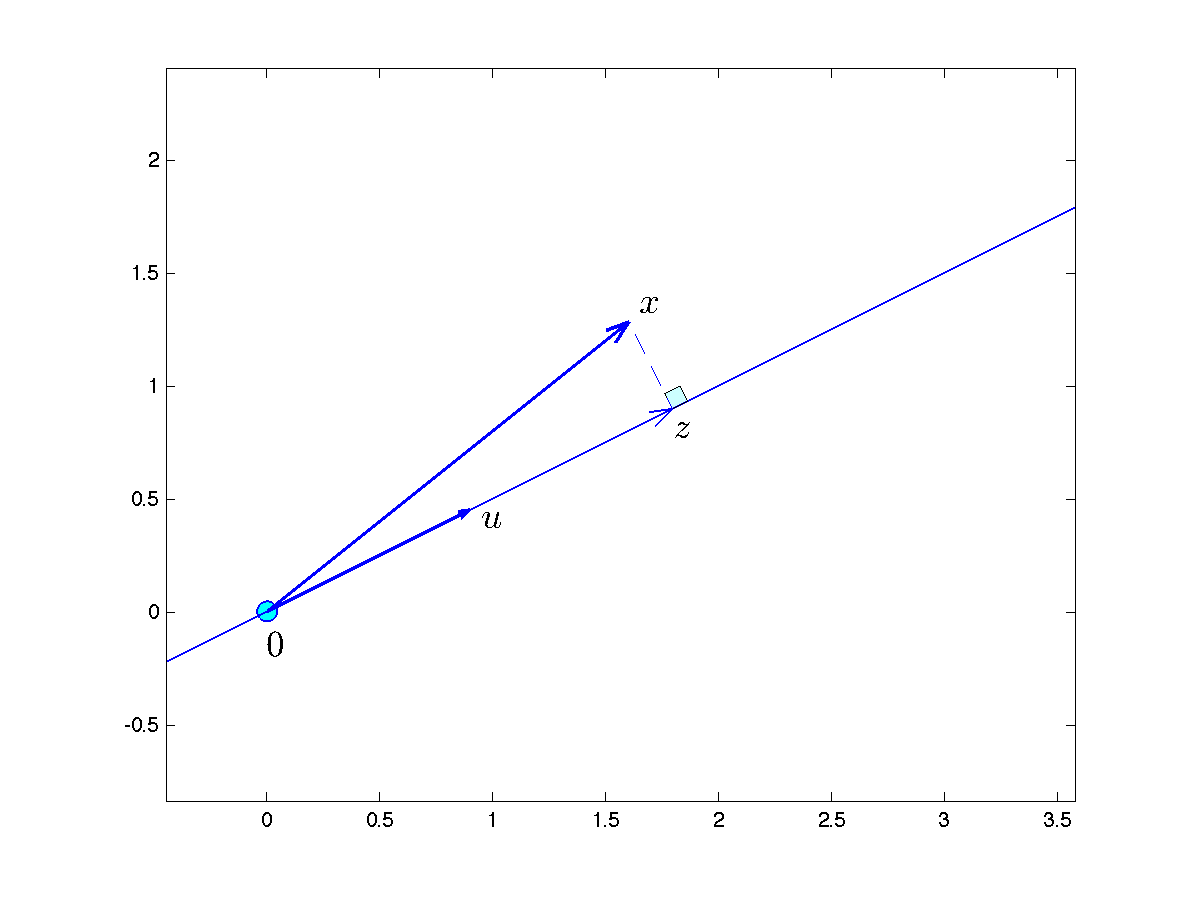Projection on a line
- Definition
- Closed-form expression
- Interpreting the scalar product
Definition
Consider the line in ![]() passing through
passing through ![]() and with direction
and with direction ![]() :
:
The projection of a given point ![]() on the line is a vector
on the line is a vector ![]() located on the line, that is closest to
located on the line, that is closest to ![]() (in Euclidean norm). This corresponds to a simple optimization problem:
(in Euclidean norm). This corresponds to a simple optimization problem:
This particular problem is part of a general class of optimization problems known as least-squares. It is also a special case of a Euclidean projection on a general set.
Closed-form expression
Assuming that ![]() is normalized, so that
is normalized, so that ![]() , the objective function of the projection problem reads, after squaring:
, the objective function of the projection problem reads, after squaring:
Thus, the optimal solution to the projection problem is
and the expression for the projected vector is
The scalar product ![]() is the component of
is the component of ![]() along
along ![]() .
.
In the case when ![]() is not normalized, the expression is obtained by replacing
is not normalized, the expression is obtained by replacing ![]() with its scaled version
with its scaled version ![]() :
:
Interpreting the scalar product
We can now interpret the scalar product between two non-zero vectors ![]() , by applying the previous derivation to the projection of
, by applying the previous derivation to the projection of ![]() on the line of direction
on the line of direction ![]() passing through the origin. If
passing through the origin. If ![]() is normalized (
is normalized (![]() ), then the projection of
), then the projection of ![]() on
on ![]() is
is ![]() . Its length is
. Its length is ![]() . (See above figure.)
. (See above figure.)
In general, the scalar product ![]() is simply the component of
is simply the component of ![]() along the normalized direction
along the normalized direction ![]() defined by
defined by ![]() .
.

